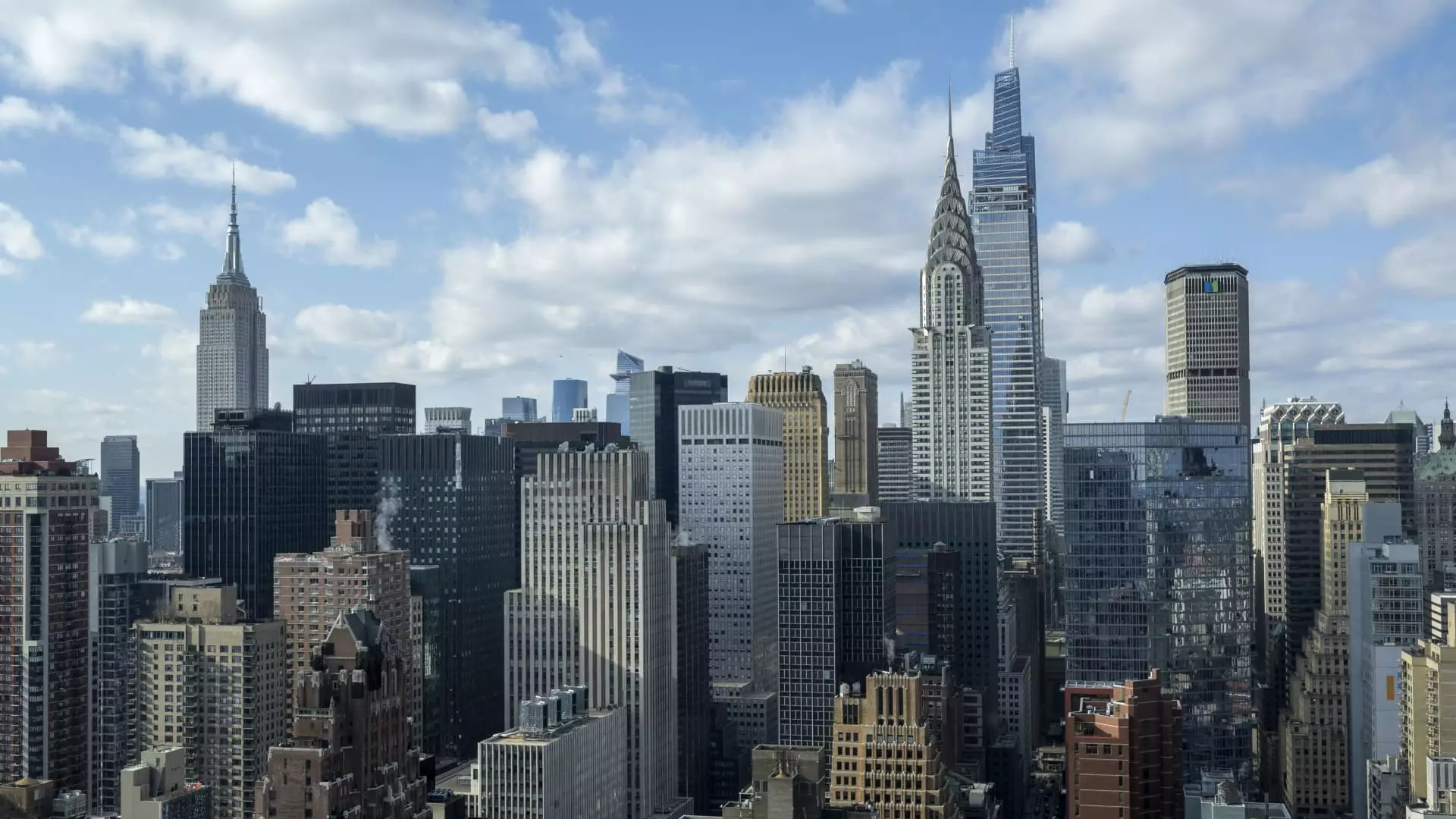As the world emerges from the shadows of the COVID-19 pandemic, New York City’s office space demand is experiencing a noteworthy resurgence. For the first time since the onset of the crisis, demand levels have rebounded to pre-pandemic figures, thanks in large part to an influx of corporate workers returning to their desks and employers eager to bring their teams back to a physical workplace. According to recent data from VTS, an organization that tracks commercial real estate demand based on the activity of prospective tenants, the fourth quarter recorded a staggering 25% increase in office demand compared to the previous year. This trend not only indicates a renewed interest in urban office settings but also reflects the unique economic and cultural fabric of New York City, particularly within its vital finance and technology sectors.
Nick Romito, CEO of VTS, highlighted that the marked shift towards in-office work is emblematic of New York City’s dynamic environment, which is now embracing the complexities of hybrid work arrangements alongside traditional office usage. Large real estate investment trusts (REITs) are closely observing these trends, as evidenced by SL Green Realty Corp.’s latest earnings report, which, despite falling short of revenue expectations, pointed towards tightening supply in the office market. The increasing demand prompts companies to adapt their real estate strategies to attract talent, signifying a noteworthy uptick in leasing activities.
SL Green’s CEO, Marc Holliday, shared insights regarding projections from the city’s Office of Management and Budget, predicting around 38,000 new office-focused jobs by 2025. This growth primarily stems from the finance, business services, and information technology sectors, bringing promising prospects for substantial absorption of office space. Holliday emphasized the predominantly non-remote nature of these jobs, which signals a sustained push for physical office environments as companies call employees back to the workplace on a more regular basis.
Occupancy Rates and Major Moves
The robust demand for office space is further illustrated by SL Green’s impressive occupancy rates, which ended last year at an outstanding 92.5%. Looking ahead, projections suggest that occupancy could exceed 93%, showcasing confidence in the market’s potential rebound. A testament to this resurgence is the recent expansion lease signed by IBM at One Madison Avenue, where the tech giant has increased its office footprint by over 92,000 square feet. This move not only reinforces IBM’s commitment to New York but also illustrates the importance of collaborative workspaces that foster engagement among employees, clients, and partners.
Joanne Wright, IBM’s senior vice president for transformation and operations, echoed this sentiment, emphasizing the importance of fostering a vibrant workspace as the organization expands its New York presence. The expansion not only highlights IBM’s commitment to New York City but also signals a broader trend among tech companies recognizing the value of physical office spaces in nurturing innovation and collaboration.
Comparative Markets: A National Perspective
While New York City leads the charge in its office market recovery, other urban centers are experiencing their own revitalization. For example, San Francisco reported an impressive 32% growth in office demand, albeit from a lower starting point. Other metropolitan areas, such as Seattle and Chicago, saw growth rates hovering around 15%, indicating a nationwide trend towards adopting hybrid work models that necessitate regular in-office attendance.
Ryan Masiello, Chief Strategy Officer at VTS, noted that while markets like New York are showing remarkable signs of recovery, the national landscape reflects a gradual, yet steady return to traditional office environments. Notably, the fourth quarter of 2023 marked a 12% increase in national demand for office space, defying typical seasonal trends and emerging amidst a cooling labor market. Masiello emphasized that businesses appear more willing to commit to leasing office space, indicating a renewed sense of confidence and long-term strategic planning amid prevailing economic uncertainties.
The resurgence in demand for office space in New York City not only underscores the city’s resilience but also highlights a significant shift in corporate strategies regarding workplace dynamics. As companies recalibrate their approaches to in-person engagement, the outlook for the office space market remains optimistic. With forecasts suggesting continued job growth in sectors that heavily utilize office space, coupled with notable occupancy rates and expansions from major players like IBM, the city is primed for a promising future in the corporate real estate sector. Thus, while challenges remain, the unfolding narrative of New York’s office market may serve as a model for other cities navigating the post-pandemic landscape.


Leave a Reply